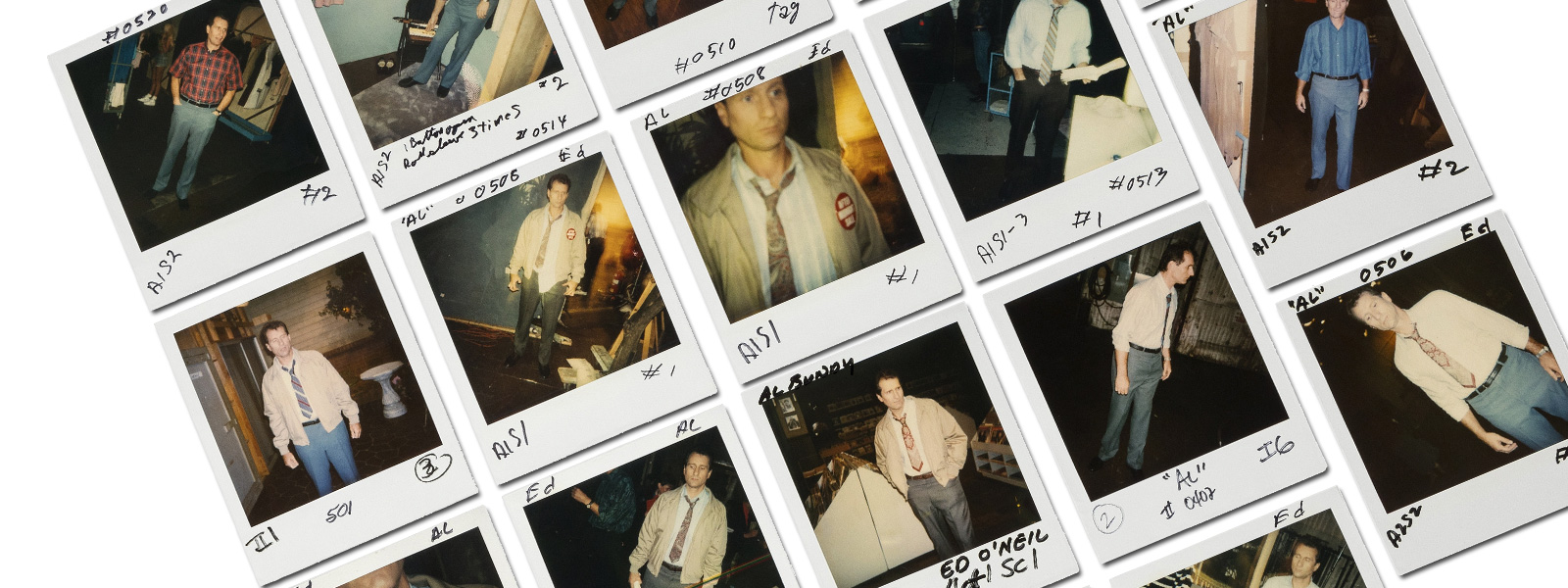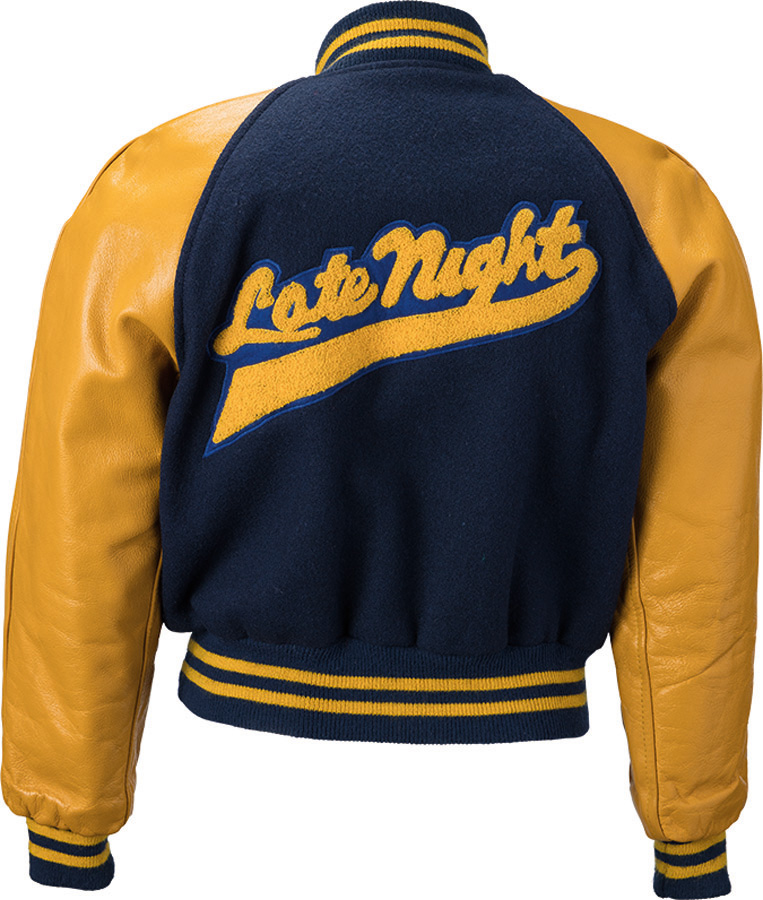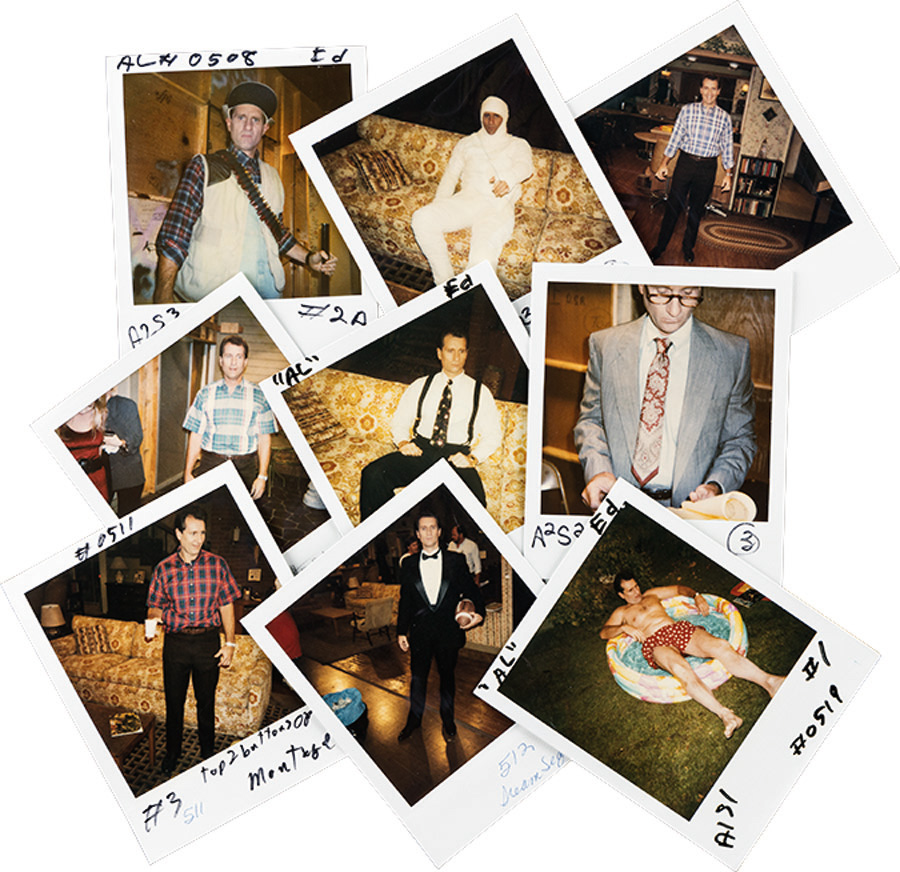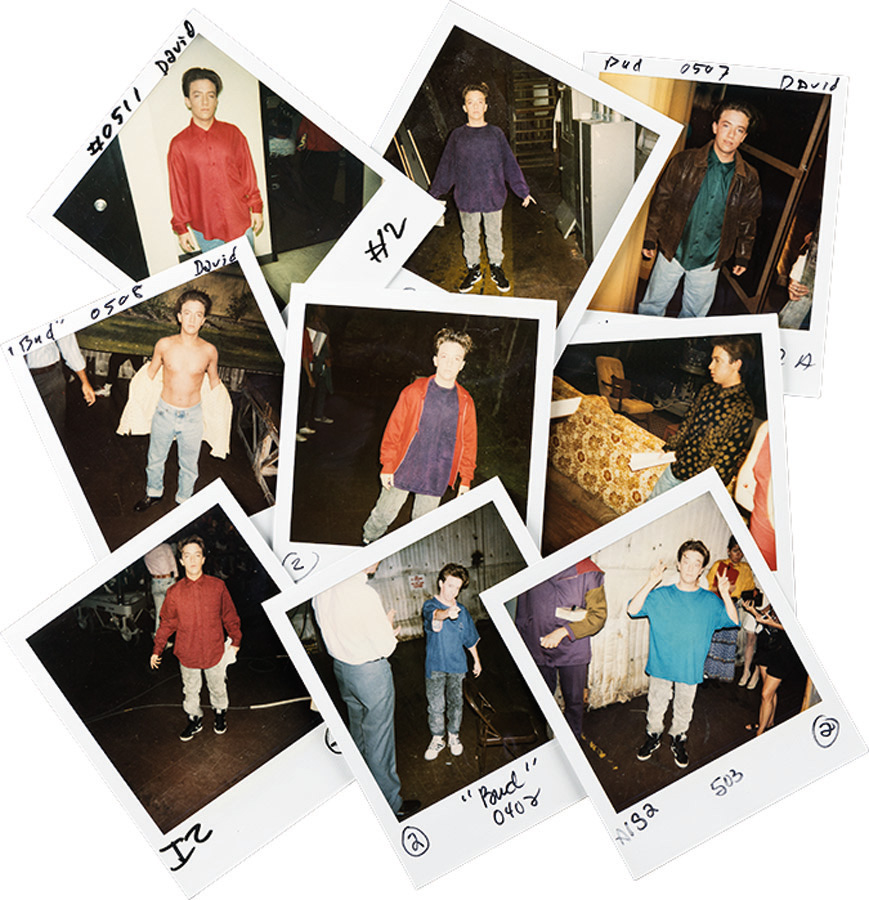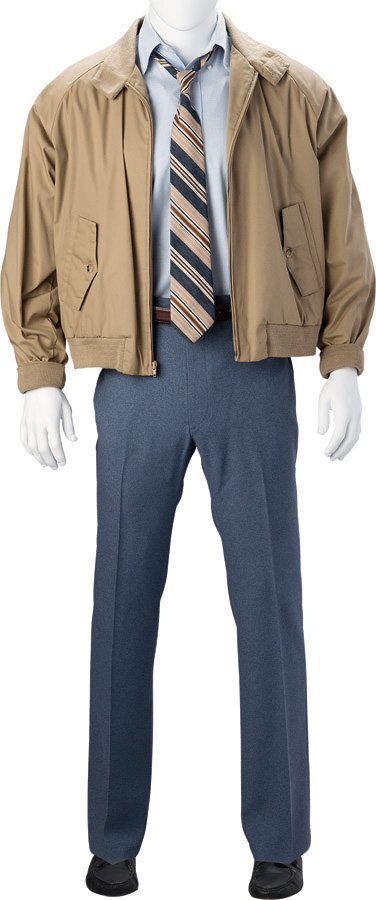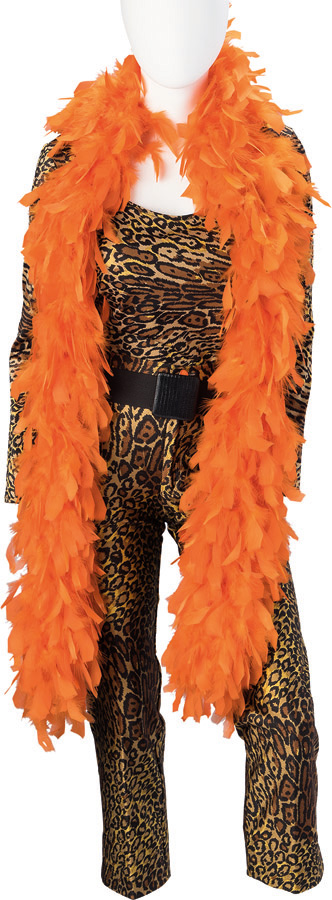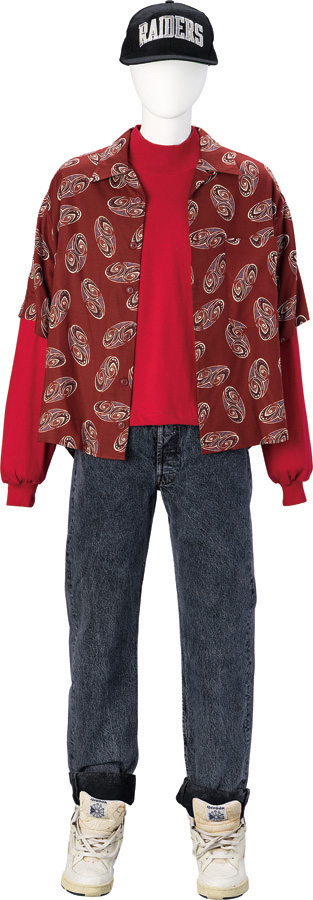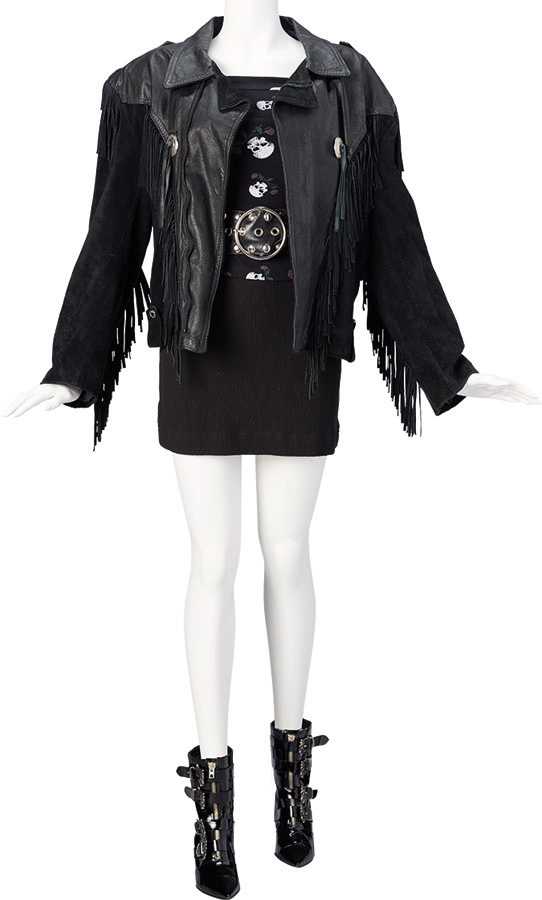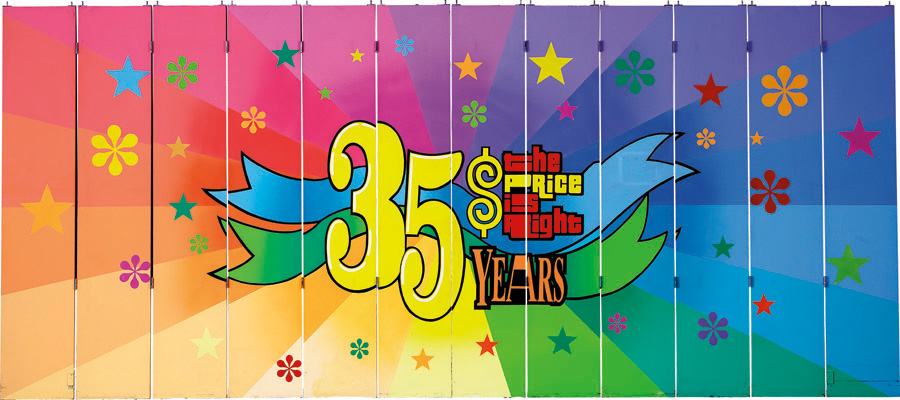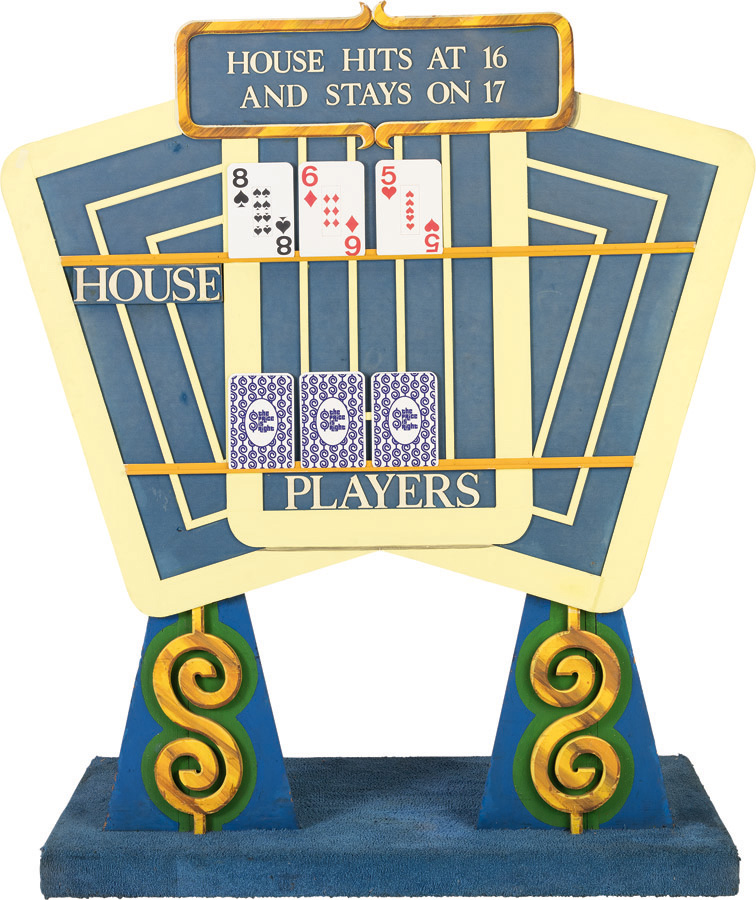THREE TV FANS ON THE SHOWS THAT CAPTIVATED THEM, COMFORTED THEM AND ALWAYS ENTERTAINED THEM
To coincide with Heritage Auctions’ presentation of The Comisar Collection, we asked a trio of lifelong TV devotees to write essays about the television shows they return to again and again. From a long-running late-night talk show and an even-longer-running game show to a sitcom whose crude humor once prompted protests and boycotts, these are the shows that have brought our writers – and millions of other viewers – decades of delight. Herewith, their stories, along with related mementos available in the June 2-4 auction.
To David Letterman, Master of the Art of Stupid
By Robert Wilonsky
There’s enough Late Night with David Letterman on YouTube to keep an old man entertained until doomsday or next Tuesday, whichever comes first. For this, we can thank Letterman and his production company Worldwide Pants, which now floods the joint with new old content on the regular, and a man named Don Giller, the superfan who, The New York Times once reported, has videos of all but two of the 6,028 late-night shows Letterman hosted during his time at NBC and then CBS.
Letterman said farewell and good riddance to network television on May 20, 2015. Then he ducked behind a bushy white beard before part-timing it on streamers. Yet he’s never been more available, visible, accessible. We used to have to wait until midnight to catch his act, which is why he always insisted his audience was made up of college students, stoners and prisoners, of which I was two out of three.
But at any hour now, we can see him throw things off a tall building to watch them explode. Or referee a brawl between Andy Kaufman and wrestler Jerry Lawler. Or slip into suits covered with Velcro, magnets or 3,400 Alka-Seltzer tablets. Or dodge a kick to the head from Crispin Glover. Or spark a longstanding friendship with Warren Zevon. Or try to figure out how Redd Foxx got on the set during an interview with Gregg Allman. Or strap a camera on a monkey. Or give a mic to Larry “Bud” Melman.
These old clips aren’t in high definition; good Lord, some are barely in color. But they never grow old – and they never feel old, more to the point. They’re just as hilarious, radical, clever and keen as they were when they first aired. Letterman had predecessors, those pioneers who proved you could make the stupid and silly look whip-smart: He was Ernie Kovacs plus Johnny Carson times Groucho Marx divided by his buddy Howard Stern, who also didn’t suffer fools. And plenty of imitators followed, chief among them Jimmy Kimmel, whose whole life is seemingly devoted to proselytizing the Gospel of Dave.
But no one was better than Letterman. Not before. Not since. And not ever again. There’s a good reason the BBC called him “The Man Who Changed TV Forever” upon his retirement. He loved how silly TV could be. And he loved how stupid he could be on TV – there was no concept he wouldn’t consider, and the more it bombed, the better it played. When Dave got pissed – when a joke tanked, a guest couldn’t keep up and everything seemed to fall apart – the laughs only got louder. Dave played up every screw-up, turned up the tense to 11 and showed us to our seats in the front row at the shitshow.
Biographer Jason Zinoman wrote that Letterman hosted the “anti-talk show”; in his book Letterman: The Last Giant of Late Night, there’s a chapter titled “The Art of Stupid.” The world’s full of think pieces on the guy dating back to his morning show, which lasted four months in 1980 and played like a late-night show for people who’d never gone to sleep. (See: Steve Martin’s bed-ridden, beer-soaked appearance from September 1980.) But in the end, he was just the funniest man on television.
I knew this in high school, which is why several pages in the 1986 Thomas Jefferson High School yearbook feature pictures of and words about Dave (I may or may not have edited the thing, I forget). Mom and Dad had Johnny, who seemed like an old man when he was 40. But we had Dave, who, at 76, still seems to possess the revolutionary spirit. Or maybe that’s just some wisdom to go along with the wise-ass – same difference.
Here is how much I loved Dave: On November 11, 1985, I bought from a now-long-defunct Dallas bookstore Late Night with David Letterman: The Book, a 207-page recap of the show’s best bits since its launch on February 1, 1982. It cost $7.16 with the store’s discount card, which seemed like a steal when videocassette recorders ran about $300 and it cost about five bucks to record a couple of days’ worth of episodes.
Contained within were favorite bits now long forgotten by everyone save for the cultists and fetishists (hello!) who still thumb through the book when most every clip is available on YouTube: “Frank and Fred” (a parody of Highlights’ “Goofus and Gallant”), “Camping With Barry White,” “Dog Poetry” and the afterschool special “They Took My Show Away.” I can watch the bits anytime. Yet the book is never out of reach.
Oh, and Letterman contributed an introduction to that book, which might be as revelatory as anything he’s said since. “You know,” the host wrote to fill a blank page, “some have called me moody, bitter, brooding, even hypoglycemic.”
ROBERT WILONSKY is a staff writer at Intelligent Collector.
The Tasteless, Timeless Appeal of Married… With Children
By Eric Celeste
It may be the most beloved sitcom in the country’s history. Centered on a four-person family of working-class archetypes – the beaten-down shoe salesman husband, the sexually frustrated housewife, the promiscuous teenage daughter and the mischievous dork of a little brother – the show ran for an astonishing 365 episodes. In fact, in the city in which it’s set, a statue of the woebegone dad, holding a high-heeled shoe, hand slightly tucked into his pants, is still a tourist draw.
The show? Schastlivy Vmeste (translated: Happy Together). The city where it’s set? Yekaterinburg, Russia. The family it revolves around? The Bukins.
If you ever doubt the everyman popularity and cultural impact of Married… With Children and the Bundy clan it spotlights (Al, Peg, Kelly and Bud), just remember Schastlivy Vmeste. The Russian sitcom ran well after MWC ended its 1987-97 run in the U.S. and was therefore able to license the 259 MWC scripts verbatim, with slight adjustments for Russian audiences. After it ran out of scripts, the Russian doppelgänger filmed more than a hundred newly written episodes just to satisfy viewer demand. This was after dubbed versions of the original episodes of MWC had themselves already run on Russian networks.
All of which is to say, definitively, that Married… With Children is one of the most iconic, hysterical television shows in history. You would think that because the show lasted for 11 seasons, making it one of the longest-running sitcoms in American history, the above claim would be widely accepted.
Well, sure. It is now. Today, MWC scores 8.1 out of 10 on IMDB.com; 91% of Google users like it. It’s on multiple “Top 50”-style lists of the best TV shows ever. But my fellow fans of Bundy follies, you must believe me when I tell you that, as someone who was 19 and instantly bewitched when the show debuted, it was largely reviled by TV critics and their ilk. And its anti-Cosby Show themes – drinking, casual sex, marital disillusion, working-class poverty, good old-fashioned family brawling – drew protests from the anti-fun crowd across the country. News shows ran endless features about MWC’s protestors and boycotts.
Luckily, ratings for the show climbed to the point that its creators made enough money to not care, meaning fans like me could simply enjoy its horned-up Flintstones-on-Bud Light vibe and laugh ourselves stupid.
“Married… With Children was a cultural phenomenon because it tapped into something that people really related to,” Katey Sagal (Peggy Bundy) told The Guardian in June 2020. “It was a show that people loved because it was real.”
“Relatable,” as the kids say these days. And, brother, did I relate. I was making $3.35 an hour at a fast-food restaurant, so Al Bundy barely having enough cash each week to hide from his thieving kids was relatable. Peggy Bundy reminded me of no one more than my oft-divorced aunt, crass and funny and perpetually disappointed in men. Kelly Bundy was every bad-girl crush I had in high school. And Bud? The smartest kid in the room, according to himself, who was endlessly mocked by the cooler kids and seethed about it during his developmental adolescence – does that sound like anyone who might be typing this?
That the show holds up and is still funny today is unsurprising in retrospect. Its creators, Ron Leavitt and Michael G. Moye, had previously worked on shows like The Jeffersons and Good Times, so they had great pedigrees. They wanted to take the DNA of those shows and pair it with the edgiest comedians of the ’80s, ensuring that MWC would always value audience laughs over story arcs with moralizing lessons – the sort that infected many late-’80s treacly sitcoms. In fact, MWC sprang from a simple idea: “Let’s write a show in which Roseanne Barr is married to Sam Kinison.”
Thankfully, those comedians were not cast as the leads. Because the secret sauce that makes MWC so rewatchable is its cast. Folks, those Bundys could make sitting on the couch funny. They had not just good, not just great, but the sort of generational onscreen chemistry that made you laugh at the same jokes every week.
I mean, look at 75% of that lead cast! (David Faustino was funny as Bud; he just didn’t have the career the others had.) As time and Modern Family have proven, Ed O’Neill is a standout sitcom actor, a TV dad with whom you can bear hug and share adult beverages. Sagal has a long acting and voice career, but you need only see her in one episode of Sons of Anarchy to be astonished by her dramatic turn.
When you pair Sagal’s work (and red wig) as Peg with Christina Applegate’s performance as Kelly Bundy, that’s where the magic lies. I hereby claim credit for almost immediately realizing what a great comedic actress Applegate was – never winked at the camera, equally believable as bombshell and badass. That she held her own with the otherworldly cast of Anchorman, that she won an Emmy as Rachel’s sister on Friends, those achievements were not a surprise. That Applegate could transform herself into the withdrawn, brooding protagonist of Netflix’s dark-hearted dramedy Dead to Me – wow, I mean, of course I saw that coming, too. I have known for a quarter-century that Applegate is the bee’s knees.
“It was a show that reflected the times,” Applegate told HuffPost in September 2017. “It had that anti-authority … anti-establishment kind of energy to it.”
As such, I would argue MWC is still a show that reflects the times, at least the best of these times. It’s a show that suggests it’s okay to hate your neighbors so long as you will defend them and their honor if accosted. That you will regale anyone who will listen with your high school football exploits, if only to show the world that you are worthy of its love. That your dead-end job is made tolerable only by the love a dysfunctional family has for you, or at least for the paycheck you bring home. That we must denounce culture warriors who would deem as irresponsible a show that once had its patriarch beat the living snot out of his daughter’s cheating boyfriend.
Because, c’mon. That last bit, that’s just good comedy. In any language.
ERIC CELESTE is a contributor to Intelligent Collector.
Why The Price Is Right Is Right for Me
By Tommy Noel
In the 1980s, most kids under 10 years old were into He-Man and The Smurfs and other animated favorites. But I was captivated by a completely different genre of television – game shows. Specifically, The Price Is Right. During the summertime (and the occasional sick day from school), that morning staple would blare from our TV set. The flashing lights, the upbeat music, the excited contestants and the fabulous prizes fascinated me. I can’t recall exactly how old I was (maybe 6 or 7), but I remember telling my mom, “I’m going to see The Price Is Right in person someday.”
As the years went by, I watched Bob Barker’s hair go from dark to gray, and I watched car prices go from four digits to five. But the theme song and many of the prize music cues remained the same – as did my affection for the show I had loved since I was a kid. In the spring of 1999, three years after the show celebrated its 25th anniversary, it was time for me to achieve a childhood goal. I grabbed some friends, and we made the 12-hour drive from Albuquerque, New Mexico, to Los Angeles to watch a taping of The Price Is Right. One friend had never seen the show (unbelievable but true), so I brought a TV/VCR combo and we watched taped episodes in the car. We woke up in the middle of the night to make the trek from our hotel to CBS Television City in Hollywood, where we stood in line for hours.
When we finally entered the studio, the late Rod Roddy came on stage to hype up the audience. We were yelling, cheering and applauding, and before we knew it, the show had begun. It was so loud in the studio, the names of the first four contestants were written on posterboard because it was nearly impossible to hear Roddy’s announcements. Barker entered through the big doors, and – on orders from Roddy – we all gave him a standing ovation. The show flowed, and the cameras never stopped rolling. Even during the commercials, Barker made everyone laugh. In fact, sitting in that audience is what inspired me to go into television. I was a morning news and weather anchor in Idaho and Dallas for many years after.
That hour taping is mostly a blur now, and no, I wasn’t called to “Come on down,” but it doesn’t matter. I had told my mom I wanted to see The Price Is Right. I didn’t say anything about being a contestant. So, dream fulfilled.
Jump ahead 23 years and I hear about The Comisar Collection arriving at Heritage. Curious if there was anything in the collection from The Price Is Right, I did some snooping and struck gold. There they were: the famous doors where Barker would make his grand entrance. But that wasn’t all. There was also a portion of the Hit Me set – and the Plinko prize board! I was in game show heaven. Seeing the Plinko set piece was especially surreal. Upon examining the back of the board, I noticed that producers had written dates it was used, starting in the late 1990s and into the early 2000s. Being the superfan I am, I cross referenced clips from YouTube to the noted dates and was immediately taken back to the day my friends and I sat in the studio audience.
Barker retired in 2007, and I think Drew Carey has done an excellent job filling his shoes. During the COVID-19 pandemic, Carey referred to the show as a reprieve, a time when you could forget your worries for an hour and watch happy contestants win prizes and money. The Price Is Right has been a part of my life for all of my 40-plus years, and for me, the show has been a reprieve. Thanks to streaming services like Pluto TV, I can take a break from the world and watch old episodes from the 1980s, when I was first introduced to favorite games such as Lucky Seven, Any Number and the Big Wheel.
The Price Is Right has now been on the air for more than 50 seasons, making it the longest-running game show in TV history. With that level of popularity, I know I’m going to have some stiff competition, but other bidders, beware. When the Plinko board crosses the auction block, you’re going to have a fight on your hands.
TOMMY NOEL is a video production specialist at Heritage Auctions.

